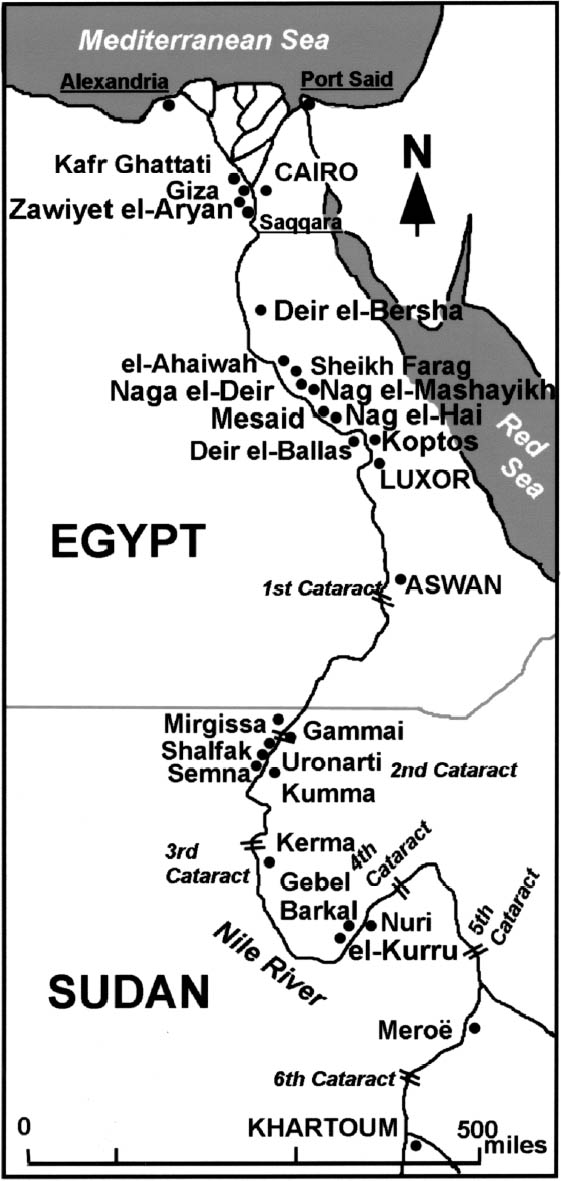THE ANCIENT EGYPTIAN COLLECTION AT THE MUSEUM OF FINE ARTS, BOSTON. PART 1, A REVIEW OF TREATMENTS IN THE FIELD AND THEIR CONSEQUENCESSUSANNE G�NSICKE, PAMELA HATCHFIELD, ABIGAIL HYKIN, MARIE SVOBODA, & C. MEI-AN TSU
2 HISTORY OF THE EGYPTIAN COLLECTION AND ITS EXCAVATIONSThe MFA was established in 1870 and, two years later, acquired the core of its Egyptian Collection from Bostonian banker C. Granville Way. Mostly of funerary nature, the material had been assembled by the Scottish art collector Robert Hay during expeditions in Egypt from 1824 to 1838. In 1875 the museum received important sculptures purchased by the successful businessman and passionate traveler John Lowell Jr., whose collection also encompassed many diaries and illustrated images of Egypt. By supporting the British Egyptian Exploration Fund, founded in 1882, the museum received “shares” from 1885 to 1909, primarily from excavations by Egyptologists William Flinders Petrie and Henri Edouard Naville. In 1902 the MFA's Egyptian Department was established with its first curator, Albert M. Lythgoe, who moved on to become the curator of Egyptian art at the Metropolitan Museum of Art, New York, four years later. During his short tenure in Boston, Lythgoe excavated with Egyptologist George A. Reisner, who was working in Egypt with the support of Phoebe A. Hearst for the University of California. By 1905, the MFA, in conjunction with Harvard University, took over sponsorship of Reisner's excavations. Reisner directed more than 20 excavations in Egypt and Sudan over the next 40 years (fig. 1). After Reisner's death in 1942, the MFA continued to enrich its collection through purchases, gifts, and exchanges. Reisner pioneered the use of photographic documentation during his excavations and established an extensive system of record keeping, which later became a model for other excavations (D'Auria et al. 1988; Manuelian 1992). Glass plate negatives were an important means of documentation for sites, excavation trenches, and objects. Meticulously annotated albumen prints were created from these. All of Reisner's documentation—including more than 60,000 glass plate negatives, hundreds of object registers, and diaries of daily activities—remain a vital source of information in the Egyptian division of the Department of Art of the Ancient World today. A grant from the Andrew W. Mellon Foundation currently supports a four-year project to provide integrated, online access to the Giza Archives—the documentation of the museum's excavations from 1905 through 1942 at the ancient Egyptian site of the Giza pyramids. When completed, this project will provide access to the excavation diaries, historic glass plate expedition photographic negatives, object register books, maps, plans, and sketches.
At the period when the MFA was assembling its collection, a small group of excavators, scientists, and restorers played a significant role in the early conservation history of Egyptian antiquities. They worked together and influenced each other as rivals and colleagues. The eminent British archaeologist and Egyptologist William Flinders Petrie excavated numerous sites in Egypt, from which (as mentioned above) the MFA received “shares” until 1909, as well as in Palestine. Petrie's influential Methods and Aims in Archaeology, published in 1904, discussed in great detail the need for record keeping and recording sites as well as ethics and the preservation of objects (Petrie 1904; Drower 1985). Petrie had an enlightened view of archaeology: “The preservation of the objects that are found is a necessary duty of the finder. To disclose things only to destroy them, when a more skillful or patient worker might have added them to the world's treasures, is a hideous fault” (Petrie 1904, 85). Reisner followed Petrie's methods and improved on them by creating an elaborate recording system (Drower 1985). Friedrich Rathgen, director of the Chemical Laboratory at the Royal Museums of Berlin, has been referred to as the “father of modern archaeological conservation” (Gilberg 1987). His book The Conservation of Antiquities: A Handbook for Curators, published in 1905, was based in large part on his experience with Egyptian antiquities at the Royal Museums of Berlin (Rathgen 1905). Although Rathgen was not directly involved in any of the MFA excavations or with its collection, his book is an invaluable resource for understanding early conservation in museums, and many of the methods he employed are still used in the treatment of archaeological artifacts today. Alfred Lucas, a British chemist, moved to Egypt in 1897, where he worked for the Antiquities Service in varying roles beginning in 1923 (Gilberg 1997). Lucas offered assistance to the many archaeologists excavating in Egypt, and he is most famous for his involvement with the preservation of the objects from the tomb of Tutankhamen. In 1926–27, he advised on the removal and treatment of objects at Reisner's most important discovery, the intact 4th Dynasty tomb of Queen Hetepheres, mother of Cheops (Khufu) (Reisner 1927). Lucas used information gathered at this site in his publication Ancient Egyptian Materials and Industries (Lucas 1934). His earlier book, Antiquities: Their Restoration and Preservation, originally published in 1924, was based on his work in the field and at the Cairo Museum. It covers earlier methods laid out by Petrie and Rathgen, among others (Lucas 1932). |
